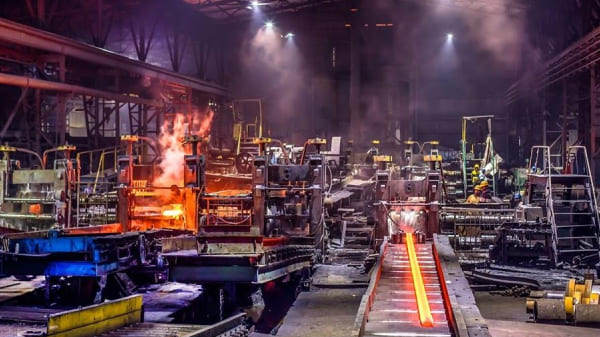The Rise of Advanced Materials in India's Metal Forming Industry

India's metal forming industry is rapidly evolving, fueled by a rising demand for advanced materials that
enable the production of lightweight, durable, and high-performance components. The use of high-
strength alloys, composites, and lightweight metals like aluminum and titanium has grown significantly
in recent years, driven largely by applications in high-tech sectors such as automotive, aerospace,
defense, and electronics. According to industry forecasts, the global advanced materials market is
projected to grow at a compound annual growth rate (CAGR) of 7-9% over the next five years, with India
playing a pivotal role in this expansion due to its robust manufacturing sector.
Advanced Materials in the Automotive Sector
The automotive industry is one of the primary adopters of advanced materials, driven by the need for
fuel efficiency and performance enhancements. The use of high-strength steel, aluminum, and
composite materials allows automakers to reduce vehicle weight by up to 20-30%, significantly
improving fuel economy and reducing emissions. High-strength steel and aluminum alloys, for instance,
are increasingly used in the manufacturing of car frames, engine parts, and body panels, balancing
strength with weight reduction. Advanced forming technologies, such as hydroforming and laser
forming, are essential for processing these materials, allowing manufacturers to achieve complex shapes
and intricate designs that meet modern design and safety standards.
Benefits for India’s Manufacturing Sector
The incorporation of advanced materials into manufacturing offers several transformative benefits for
India’s metal forming industry:
Enhanced Performance: Materials like titanium and carbon composites provide superior strength,
corrosion resistance, and durability, extending product lifespans and enhancing safety features.
Weight Reduction: Lightweight materials reduce overall weight, which is crucial for automotive and
aerospace industries. Reduced weight directly translates to better fuel efficiency, lower emissions, and
improved performance.
Cost Efficiency: Although advanced materials come with a higher initial cost, they can deliver long-term
savings due to enhanced durability, reduced maintenance needs, and better operational efficiency.
Transitioning to advanced materials also presents significant challenges. Traditional metal forming
techniques may be incompatible with high-strength alloys and lightweight metals, requiring
manufacturers to invest in new machinery, advanced forming methods, and skilled labor. For instance,
the high precision required for composite material processing often demands specialized equipment and
processes like laser-assisted forming, which may not be feasible with traditional setups. However, with
these challenges come opportunities: the ability to produce high-performance, lightweight components
is increasingly becoming a competitive differentiator in global markets.
Metal Forming Expo: Showcasing the Future of Advanced Materials in India
The upcoming Metal Forming Expo from 11-13 April 2025 at PIECC, Moshi, Pune, serves as a vital
platform for industry leaders to explore the latest advancements in materials and forming technologies.
Attendees can experience firsthand how advanced materials are reshaping India's manufacturing
landscape, with live demonstrations, technical sessions, and insights from industry experts. This is a
unique opportunity for manufacturers, suppliers, and industry professionals to connect, learn, and forge
partnerships that can propel their businesses forward in an era where material innovation meets
manufacturing excellence.
In an increasingly competitive market, embracing advanced materials can set India’s manufacturers
apart, enabling them to meet the demands of modern industries. The Metal Forming Expo invites
professionals to experience this transformation, uncovering new avenues for growth and operational
efficiency.